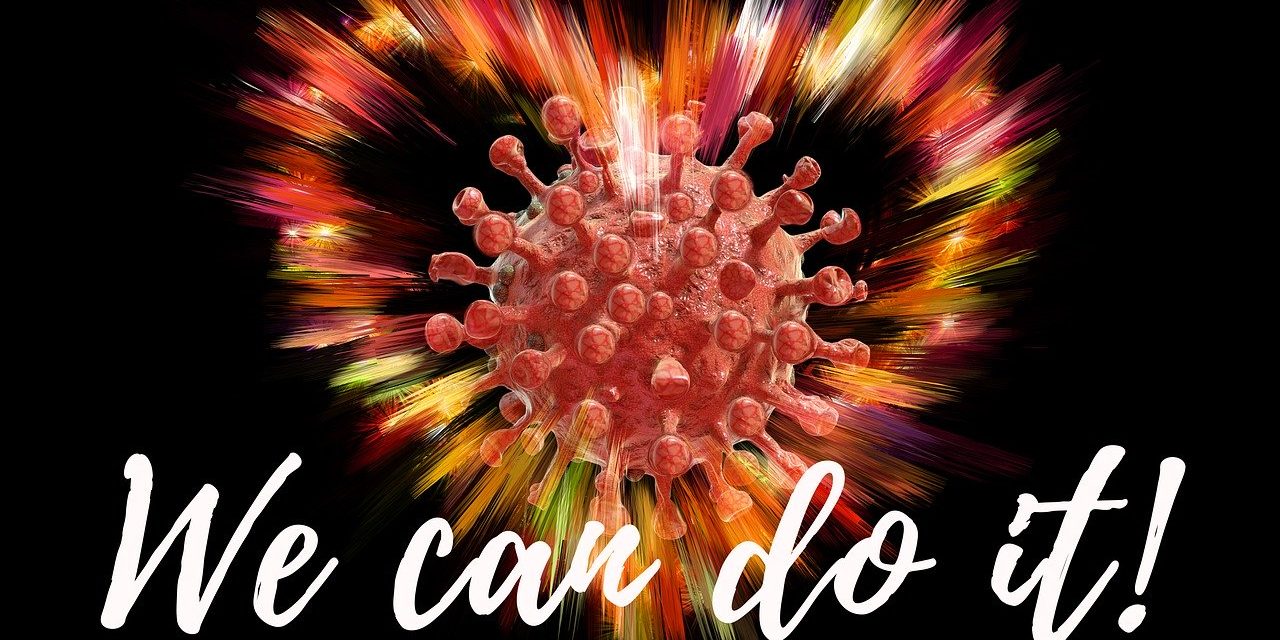Image by Gerd Altmann from Pixabay
Six steps to assist you in deciding how your business can make a difference — to best serve your community in the coronavirus pandemic.
If you’ve Googled the keywords, “companies help community coronavirus,”you’ve seen at least 2 billion search results.
Yet many businesses are struggling to stay alive and to keep their workers safe during the coronavirus pandemic.
Nonetheless many are finding ways to help and creating goodwill at the same time. They’re honing their messaging about the coronavirus (but more on that below in steps five and six).
Admittedly, it’s easier for big companies as many small business owners with cash flow issues aren’t in a position to help.
Their salient challenge is just to keep their doors open. If they’re able to stay afloat, in some ways they are indeed benefiting the community by remaining a relevant business.
Typically, the businesses that focus on the welfare of their own workers are also actively giving back to their communities. By treating their employees well, they create a domino-effect that pervades their community.
True, not every business have obvious capabilities to help. But if they think about it there are creative ways they can help.
Deciding how to help
First of all, remember charity begins at home. Have you done whatever is necessary to help your employees in the pandemic? Your employees will be thinking, “what about us?”.
Also, your workers know people are suffering and millions are losing their jobs. So, your employees’ morale warrants your leadership.
(For solving the pandemic effects on your business, see these topics,)
Assuming you’ve done all you can for your workers, now you can focus on community needs.
If you’re trying to decide what your company can do, you might not have a great idea what to do but surely there’s a resourceful way your business can help.
Think about how you started in business. You found needs to fill, right?
Pay close attention to your community’s needs. Find needs to fill in your community.
To decide what to do, here are six steps to get started:
1. Review how your business serves your community
Think about your core competencies and services. How do they benefit your customers?
2. Take into account your resources
Consider two things:
Your company’s qualities – whether you’re fortunate and flush with money, have unique expertise, excess capacity in warehousing, personnel who can volunteer services or have a big unsold inventory.
Again, pay attention to what’s happening in your community and consider whether your resources can address those needs.
3. Decide how to use your resources
Consider a famous quote by a U.S. president: “Do what you can, with what you have, where you are,” said Theodore Roosevelt.
OK, so you’re like a lot of businesses and have limited revenue and resources.
Nevertheless, perhaps you can produce a produce a product that is complementary to your core business or mentor someone who is less fortunate.
4. Consider a strategic partnership
To make it easier for your business, there might be an ideal organization in your community with which to form a strategic partnership.
5. Get the word out in earned advertising or media
Earned advertising is the term for free public relations. Spread the word by marketing your contributions. There are lots of ways to get free publicity especially with the coronavirus crisis.
The media is always looking for good-deed stories.
Also, try newsjacking for publicity. That’s the art and science of obtaining mountains of free media coverage and social-media spin by getting your content injected into late-breaking news stories.
6. Paid advertising so that you don’t appear to be self-serving
Relevance matters. Before you shift to pandemic advertising, once again this caution: Listen what’s going on in your community.
After you’ve assessed needs and you know what your role can be, evaluate how consumers’ lives have changed and strategize how to best be of service.
It’s important to adequately do what you say and to say what you do. In your messaging, focus on what action you’ll take, the information you provide and the community support that you’ll give.
Oh, by the way, pandemic advertising is also known as cause-related marketing. But cause-related marketing must be done right.
Good luck! Remember the adage: “What goes around, comes around.” You’ll feel better and staff morale will improve.
From the Coach’s Corner, here are relevant sources of information:
How You Can Leverage the News Media to Brand your Business – Social media is OK for promotion. But if you need blockbuster publicity, use the best practice in marketing — public relations with great press releases.
5 Vital Elements to Successfully Pinpoint Your PR Targets – Even in this advanced age of the digital economy a sound public relations program, if you accurately pinpoint your targets, remains one of your most-powerful marketing investments. Even if journalists aren’t motivated to give you publicity, a strong PR campaign will help you to accomplish your objective.
Cause-Related Marketing Can Increase Sales by Double Digits – The Biz Coach has long-advocated cause-related marketing. Customers love community-minded businesses. Now, he’s happy to report on a major study.
How Marketing Makes Corporate Social Responsibility Profitable – What are the best choices in corporate social responsibility? Social responsibility leads to a good return on investment (ROI) if marketing is implemented properly. But some CEOs make the wrong choices in trying to implement social responsibility initiatives.
“A little more persistence, a little more effort, and what seemed hopeless failure may turn to glorious success.”
-Elbert Hubbard
__________






